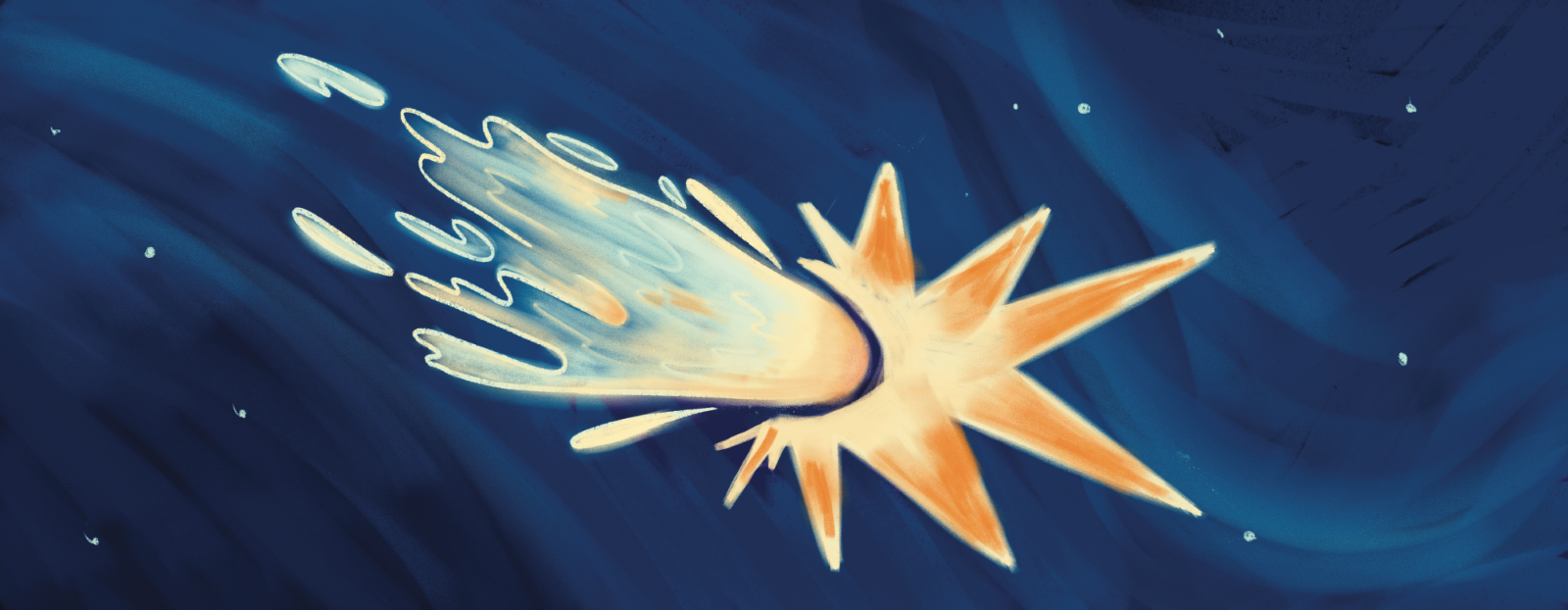As the night sky prepares to unveil a mesmerizing celestial event, astronomers and stargazers alike eagerly anticipate the upcoming nova in the constellation of Corona Borealis. This rare astronomical phenomenon promises to captivate observers with its luminous display.
The star system—located 3,000 light-years from Earth—is predicted to become visible to the unaided eye soon. This could be a “once-in-a-lifetime viewing opportunity as the nova outburst only occurs about every 80 years,” according to the National Aeronautics and Space Administration (NASA). “T Coronae Borealis, or T CrB, last exploded in 1946 and astronomers believe it will do so again between February and September 2024.”
T Coronae Borealis was discovered by astronomer John Birmingham in western Ireland when it went nova in 1866.
The star system—normally of magnitude +10, which is far too dim to see with the unaided eye—will jump to magnitude +2 during the event. This will be of similar brightness to Polaris, aka the North Star. Once its brightness peaks, it should be visible to the unaided eye for several days, or just over a week with binoculars, before it dims again for possibly another 80 years.
This recurring nova is only one of five in our galaxy. This happens because T CrB is a binary system with a white dwarf and a red giant. The stars are close enough where, as the red giant becomes unstable from its increasing temperature and pressure and begins ejecting its outer layers, the white dwarf collects that matter onto its surface.
William Blackmore—Portland State alumnus, planetarium director and astronomy instructor at Mt. Hood Community College—explained the complexities of the nova phenomenon. “A nova, distinct from a supernova, arises from the interaction between a white dwarf and a red giant in a binary star system,” he said. “As the white dwarf accumulates material from its companion, it undergoes a thermonuclear reaction, resulting in a brilliant outburst of light.”
Blackmore highlighted the importance of seeing such a rare event, comparing it to studying the history of how stars have changed over time. He highlighted the role of novas as standard candles for measuring distances in space and explained the formation of new elements during these energetic reactions.
Standard candles are astronomical objects that make up the rungs of the so-called cosmic distance ladder, a tool for measuring the distances to farther and farther galaxies. Measurements of the distances to these stars from Earth are critical in making precise measurements of even more distant objects.
For amateur astronomers eager to catch a glimpse of the nova, Blackmore offered practical advice. He recommended familiarizing oneself with the constellation of Corona Borealis and utilizing tools, such as star maps and smartphone apps, to locate it in the night sky. With the nova expected to reach a brightness comparable to Polaris, observers armed with binoculars or telescopes can anticipate a stunning celestial display.
“The fact that it’s recurring on a timescale we could work with—as us humans are concerned and not thousands of years—but still within a human lifetime makes it very special,” Blackmore said.
Jim Todd—PSU alumnus and director of Space Science Education at the Oregon Museum of Science and Industry—emphasized the historical importance of novas. Todd highlighted the transient nature of celestial events, reminding us that the light from the nova we observe today embarked on its journey thousands of years ago.
Todd encouraged amateur astronomers to embrace the nova as a unique learning opportunity, urging them to exercise patience and persistence in their observations. He suggested using telescopes equipped with astrophotography capabilities to capture the nova’s fleeting brilliance and contribute to scientific understanding.
“Nova’s are much more rare than what we say, [and] than what we see of the solar eclipse,” Todd said. “So we just had one [eclipse] on April 8, but we last had one in Oregon in 2017. But we won’t see [the nova] again for a very long time.”
“We’ll see it from now until September,” Todd said. “But why September? Well, the constellation we have to keep an eye on is in the vicinity of Hercules and Brutus. By September, it will go below the horizon for us.”
“Keep in mind, we’re looking at a nova that occurred 3,000 years ago,” Todd said. “A light that left that star, traveling at light speed, 6 trillion miles a year, 186,000 miles per second, would reach your eye now when the nova actually happened 3,000 years ago. For many people, that’s a hard concept to understand. It’s essentially like you’re looking at a ghost.”
Kevin Davis—planetarium manager at Eugene Science Center—provided additional insights into the technical aspects of observing the nova. Davis emphasized the importance of telescopes and astrophotography for enhancing the viewing experience, particularly in capturing the nuances of the nova’s evolution over time.
Interestingly, as it nears the end of its life, our sun will eventually become both a red giant and a white dwarf. First, it will swell, shedding its outer layers, and then it will become compact and super dense, around the size of Earth.
You can find T CrB in the constellation Corona Borealis, hence its name. The constellation’s Latin name translates to the northern crown, as it looks like a crown and is found in the northern sky.
Corona Borealis looks like a squashed “U” in the northern sky between the constellations of Hercules and Boötes. Under dark skies, you can see its seven brightest stars. The brightest is Alphecca, which has a magnitude of roughly +2.2. Once T CrB goes nova, it will be almost as bright as Alphecca.
“You can use the Big Dipper as a guide,” Todd said. “Make an arc with the hand of the Big Dipper to arc down to Arceus, which is the red giant, [a] super bright star. And then go to the left. And that’s where you’re going to see a crescent constellation, the corona borealis. You’re going to see that crescent star pattern. If you get to Hercules, you pass[ed] it. Hercules is a ketone pattern of stars. But if you go in between, you’ll find the constellation.”
With expert guidance, amateur astronomers are poised to embark on an unforgettable journey into the cosmos. Whether peering through a telescope from their backyard or attending public viewing events organized by observatories and science centers, students and enthusiasts alike can witness this celestial spectacle.






